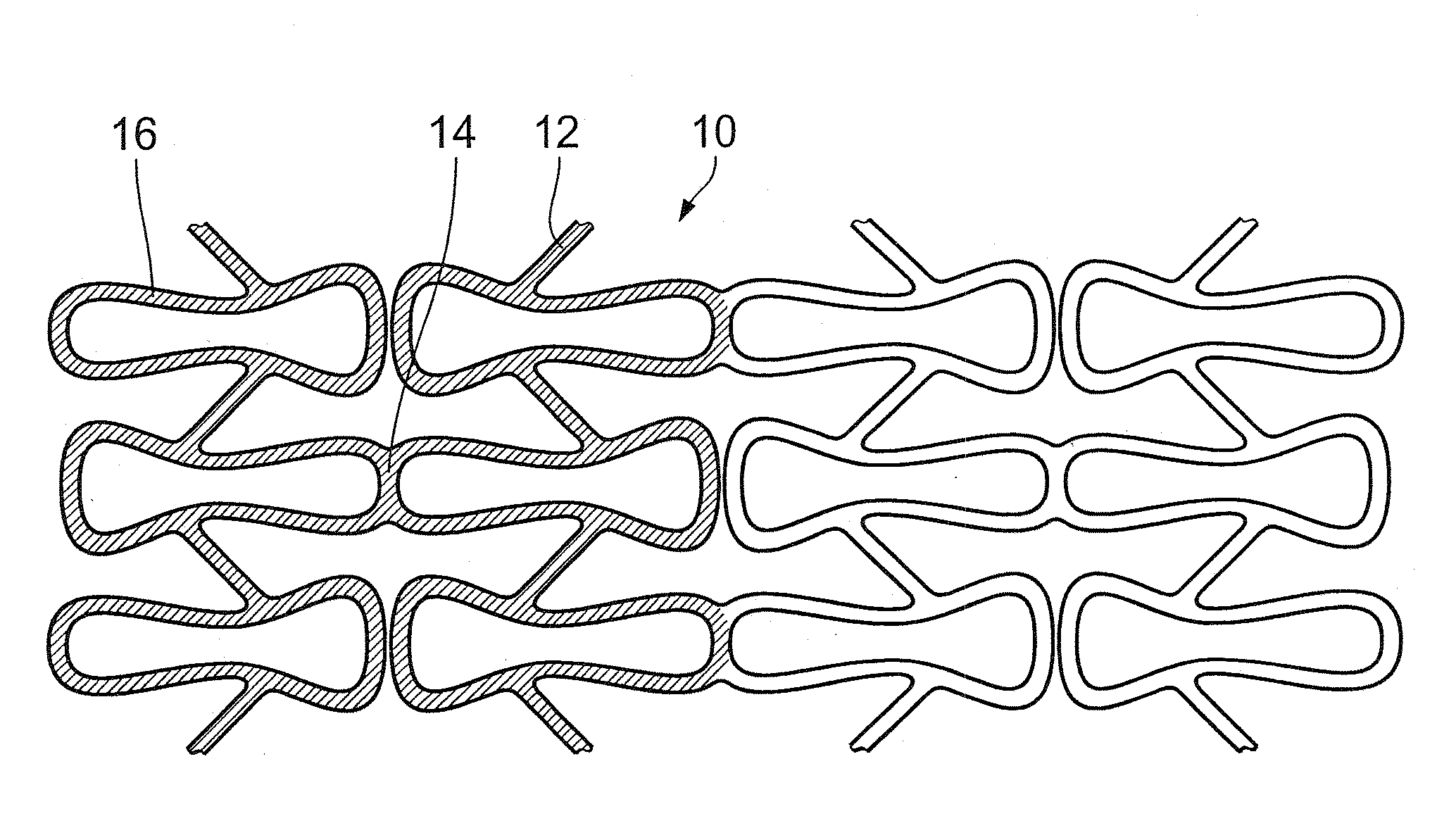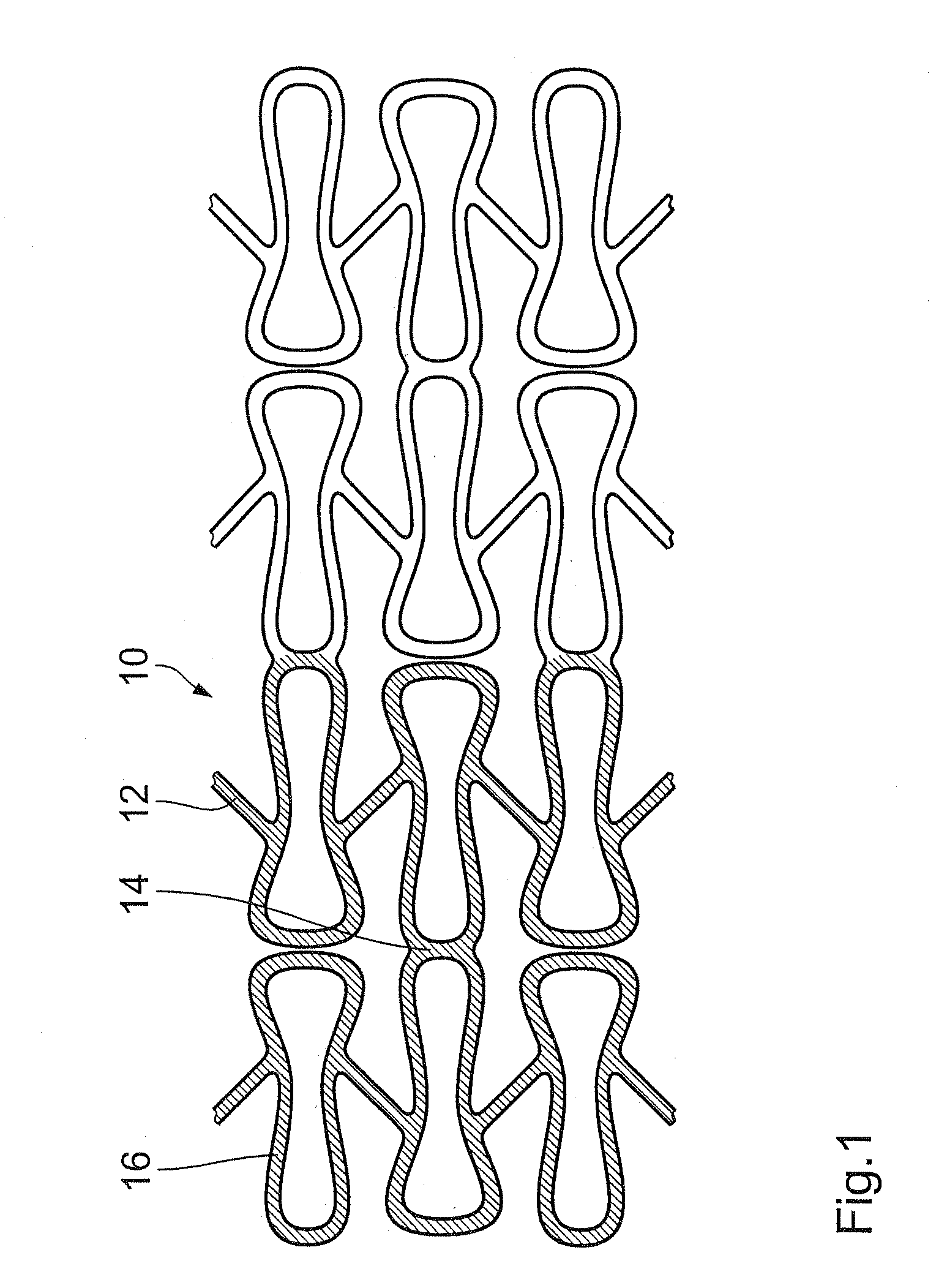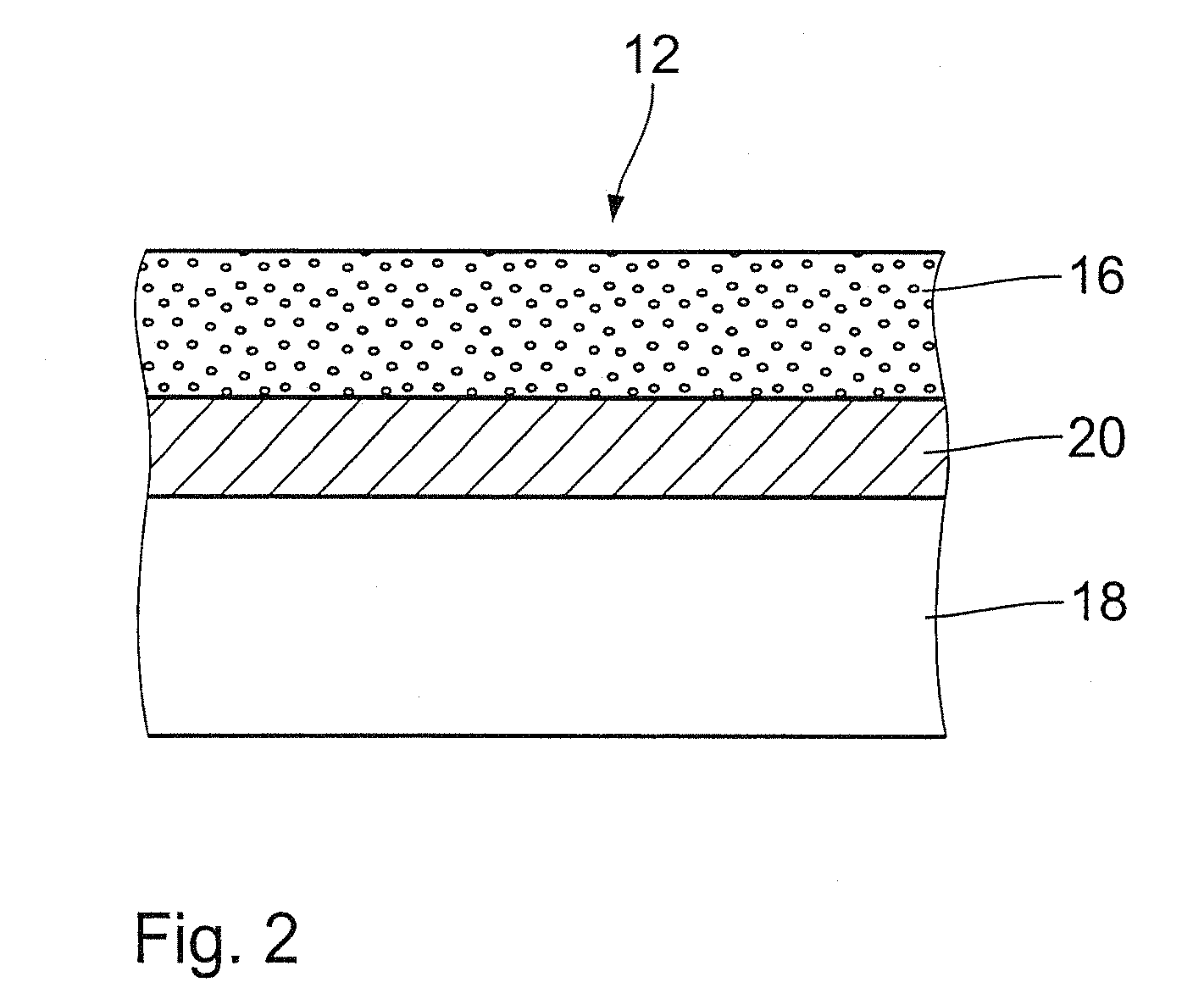Endovascular implant with active coating
a technology of endovascular implants and coatings, applied in the field of endovascular implants, can solve the problems of reducing the adhesion capacity reducing the mechanical deformation reducing the elasticity of the expanded blood vessel, so as to achieve the effect of high mechanical deformation, increased risk of coating flaking detachment, and high adhesion capacity
- Summary
- Abstract
- Description
- Claims
- Application Information
AI Technical Summary
Benefits of technology
Problems solved by technology
Method used
Image
Examples
embodiment
[0051]A commercially available stent which can be obtained under the trade name LEKTON from BIOTRONIK is used in the endovascular implant.
[0052]The stent is clamped in a rotational atomizer. A solution of poly-L-lactide (which can be obtained under the trade name RESOMER L214 from Boehringer Ingelheim) and clofibrate in chloroform is prepared in a supply container of the atomizer (poly-L-lactide concentration: 7.5 g / l). The proportion by weight of the active substance clofibrate to the mass of the drug carrier poly-L-lactide is set to between about 10% and 50%, in particular between 15% and 40%, preferably between 20% and 30%, of the total mass. Active substance concentrations of 15%, 30% and 40% were tried.
[0053]The stent is wetted on one side with a finely distributed mist produced by the rotational atomizer in 80 cycles each of a duration of about 10 s. The respective wetting operation is followed by a drying step by blowing-off of a duration of about 12 seconds. After terminatio...
PUM
| Property | Measurement | Unit |
|---|---|---|
| thickness | aaaaa | aaaaa |
| thickness | aaaaa | aaaaa |
| thickness | aaaaa | aaaaa |
Abstract
Description
Claims
Application Information
 Login to View More
Login to View More - R&D
- Intellectual Property
- Life Sciences
- Materials
- Tech Scout
- Unparalleled Data Quality
- Higher Quality Content
- 60% Fewer Hallucinations
Browse by: Latest US Patents, China's latest patents, Technical Efficacy Thesaurus, Application Domain, Technology Topic, Popular Technical Reports.
© 2025 PatSnap. All rights reserved.Legal|Privacy policy|Modern Slavery Act Transparency Statement|Sitemap|About US| Contact US: help@patsnap.com



